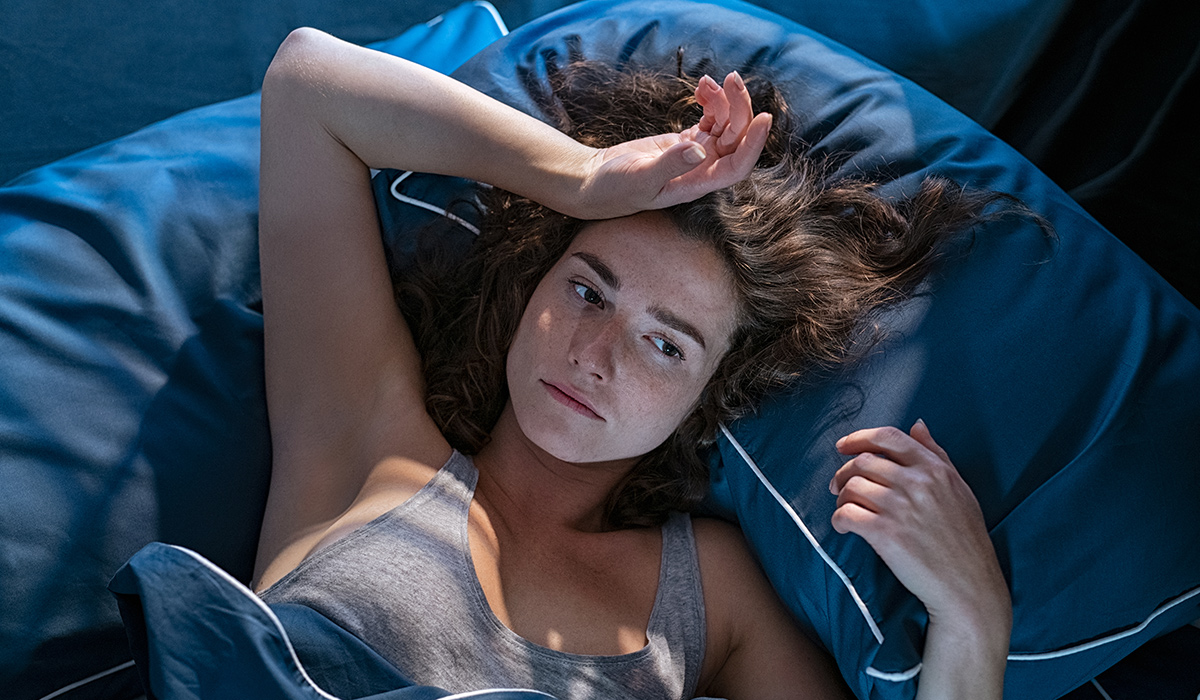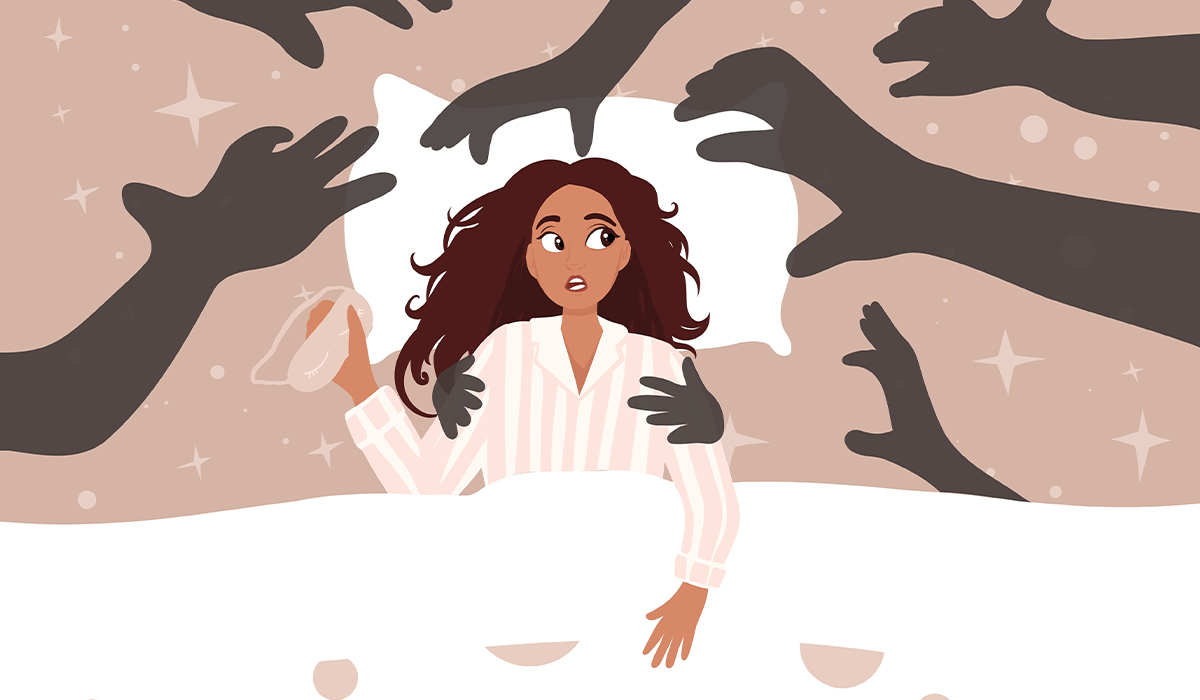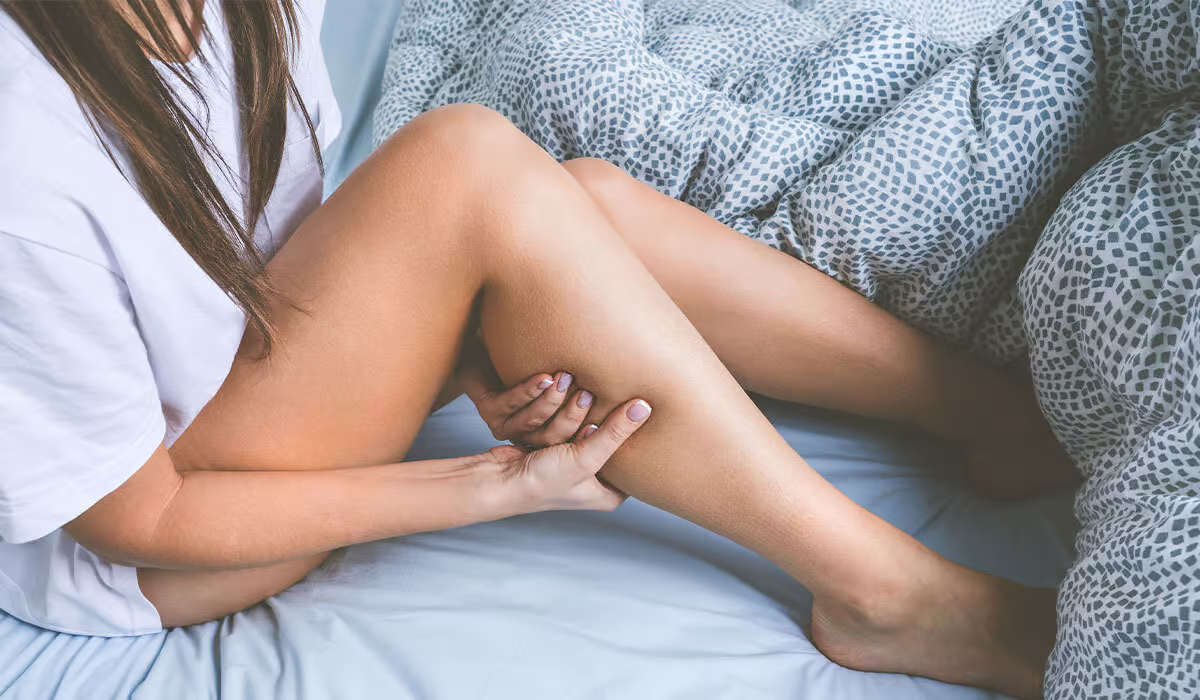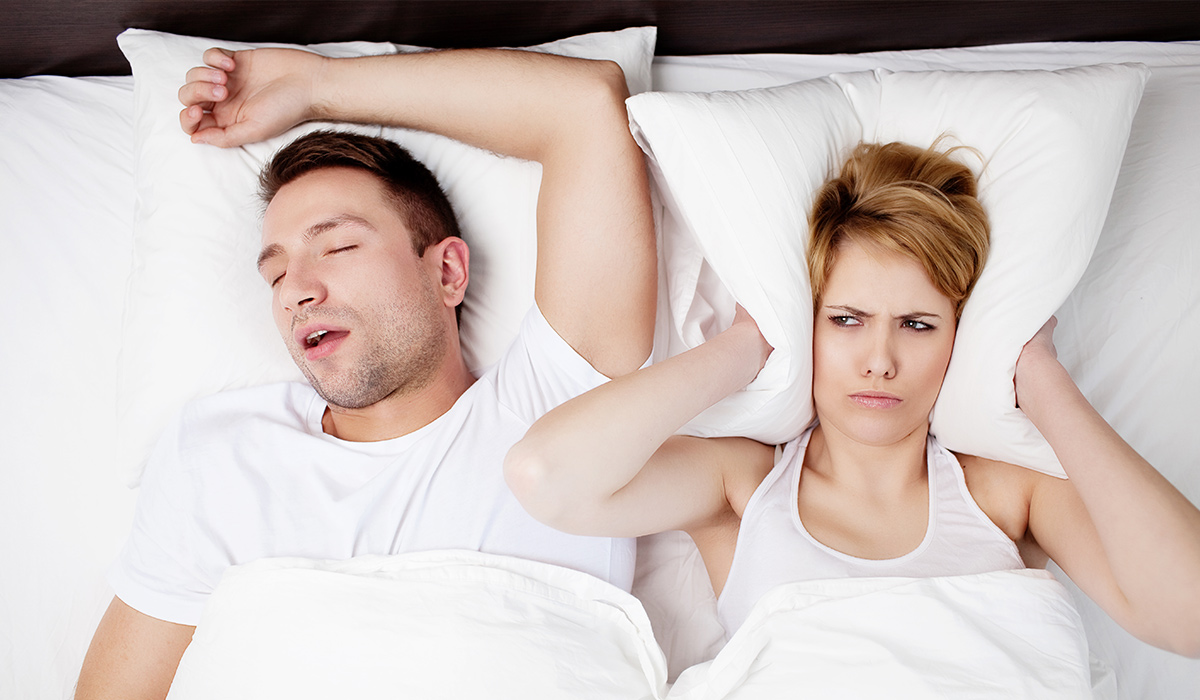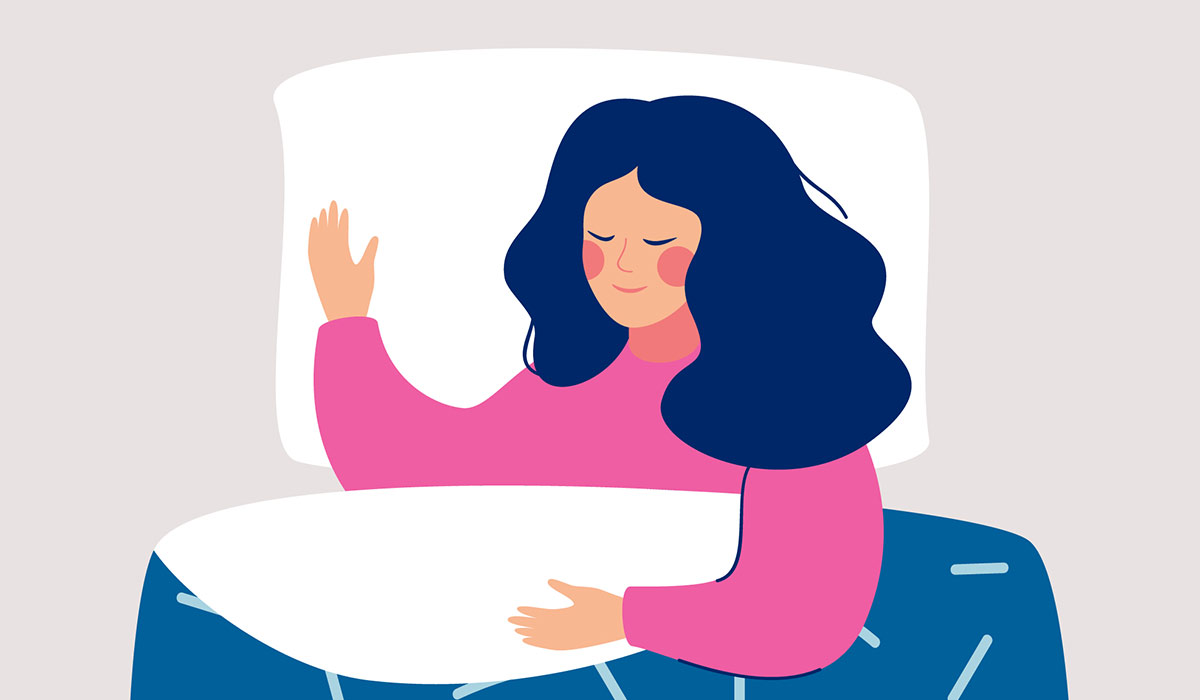This condition can be linked to obstructive sleep apnea (OSA) and other factors that constrict the airways, including obesity, nasal blockages, craniofacial anomalies, hypothyroidism, acromegaly, and enlarged adenoids.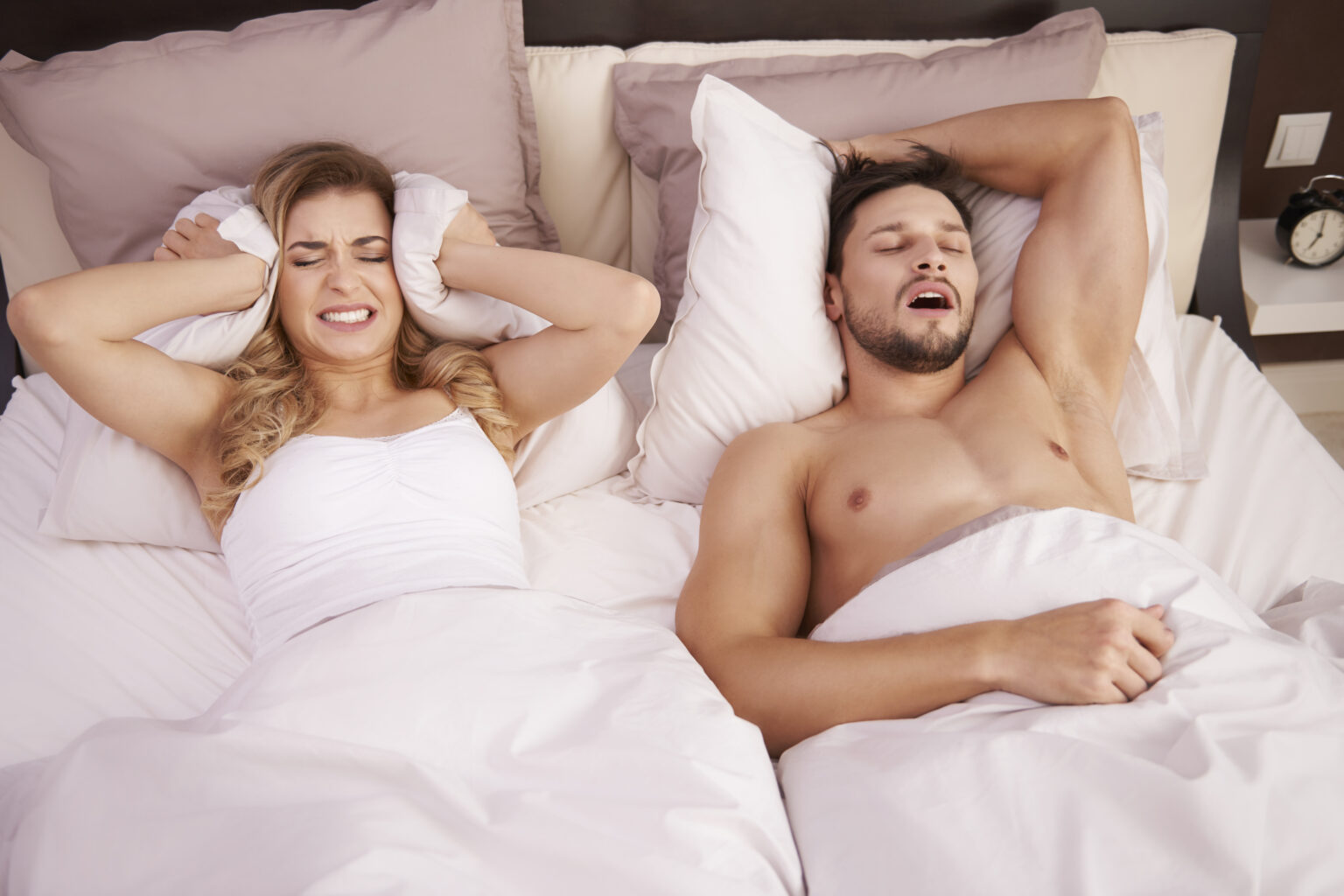
Causes
Snoring at night is not a disease, but it can be a symptom of some diseases. Sometimes, however, making loud sounds during sleep is unrelated to any health disorder.
The most common causes include the following circumstances:
- Deviated nasal septum (congenital or acquired)
- Allergies
- Overweight and obesity
- Smoking cigarettes (frequent and mostly before sleep)
- Nasal polyps
- Hypertrophy of the palatine tonsils
- Hypertrophy of the base of the tongue or uvula
- The specific structure of the soft palate (when it is too soft and flaccid, this ailment occurs)
- Hypertrophy and swelling of the nasal turbinates
- Decreased muscle tension in the throat and tongue
- Other congenital defects of the upper respiratory tract
The cause of this condition may result from drinking too much alcohol, taking antidepressants or sedatives, temporary indisposition caused by a cold or sinusitis, undergoing a lot of physical exertion during the day, fatigue, and sleeping on your back.
In expectant mothers, however, sounds coming from the oral cavity during sleep are caused by an expanding belly, which presses on the diaphragm and swollen nasal passages. A pregnant woman should consult her night problems with a gynecologist to eliminate any more severe conditions, e.g. hypertension.
Snoring in children is often caused by frequent upper respiratory tract infections and hypertrophy of the third tonsil or allergies. In children under 1 year old, snoring may indicate laxity of the cartilage elements in the larynx. In the case of children, you should not delay a visit to the pediatrician, because such disturbed sleep can lead to delays in the child’s development.
Diagnostics
During diagnosis first, the doctor will collect a detailed history of snoring – how often the patient snores, whether it is accompanied by other symptoms, e.g., waking up at night with a feeling of lack of air, or choking, and whether there is sleepiness during the day. Collecting information from the person who sleeps with the patient may also be helpful. The doctor will also ask about other symptoms, such as weight gain, allergies, sinus problems, recent surgeries, sleeping position, sleeping habits, medications (e.g., sleeping pills such as benzodiazepines), and possible stimulants (including alcohol).
The doctor will then examine the patient by performing an ENT examination. Later, if necessary, the patient will be referred for additional tests, imaging, or laboratory tests.
Is Snoring Harmful?
Studies indicate snoring may be associated with high blood pressure and cardiovascular disease. However, it is not sure whether these are the effects of snoring itself or obstructive sleep apnea (OSA), which often coexists with snoring and is known to cause adverse health consequences. It is assumed that snoring can be associated with carotid atherosclerosis, hypertension, and ischemic heart disease.
An adverse consequence of snoring can also be disruption of the sleep of the person with whom the snoring patient sleeps, fatigue, daytime sleepiness, and problems in the relationship.
What Are The Risks When We Snore?
Breathing hindered by snoring leads to hypoxia of the body, which translates into a decrease in sleep quality, which becomes shallow and ineffective. It in turn, can cause:
- Problems with concentration
- Irritability
- Headaches
- A feeling of fatigue during the day
Furthermore, this ailment often negatively affects relationships with household members, whose night’s rest is effectively disrupted. However, these types of snoring effects are not among the most dangerous.
Chronic snoring is very often associated with much more severe disorders. During sleep, the tongue and throat may collapse to such an extent that it causes cause episodes of sleep apnea, which is a significant limitation or complete cessation of airflow through the respiratory tract. The pauses in breathing can last up to 10 seconds.
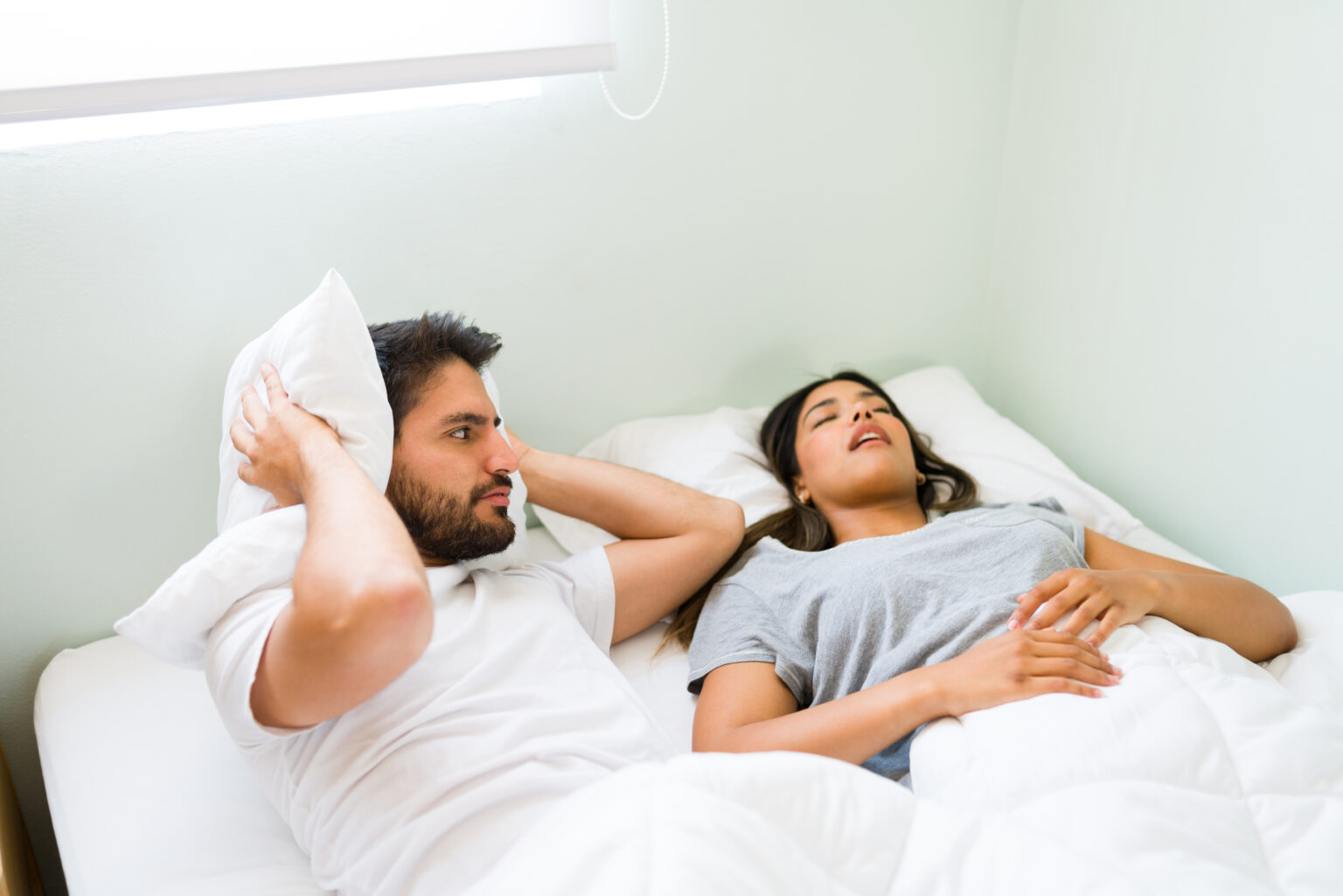
How Does Sleep Apnea Manifest?
People suffering from this condition experience:
- Problems with falling asleep and maintaining sleep continuity
- Repeated sudden awakenings at night, accompanied by rapid breathing and a feeling of undefined anxiety
- Irregular snoring interrupted by unexpected silence, which should worry third parties
Treatment
Treatment for snoring depends on its underlying cause.
If snoring is linked to obstructive sleep apnea, a doctor will recommend specific treatments for that condition.
For those who snore but do not suffer from obstructive sleep apnea, the approach to treatment largely hinges on whether the individual finds the snoring bothersome. If it is an issue, the doctor will suggest conservative measures to reduce or eliminate the problem. These strategies may include:
- Regulating body weight by adopting a balanced diet and increasing physical activity, particularly for those who are overweight or obese.
- Avoiding alcohol and quitting smoking, as it is advisable to either stop entirely or at least refrain from drinking alcohol for a few hours before bedtime.
- Sleeping on one’s side – various methods help individuals avoid sleeping on their backs. These can include alarms, special pillows, and specific sleepwear. A straightforward technique is wearing a fitted sleep shirt with a pocket sewn into the back, into which a tennis ball can be placed. The discomfort of rolling onto the back often encourages a person to shift back to a side position without waking.
CPAP Therapy
CPAP therapy is recommended for patients who struggle with snoring, numerous sleep apneas, and circulatory system complications. The CPAP device generates positive pressure in the airways, which prevents the soft structures of the throat from collapsing, reducing the number of apneas and the intensity of this ailment. The CPAP device should always be worn during sleep, including daytime naps.
Despite the high effectiveness of such therapy, some patients do not tolerate it well – sleeping in a mask can be uncomfortable. Sometimes, it is difficult for patients to get used to the induced positive pressure in the airways. In such a case, changing the device to one with an auto CPAP function is worth considering. It generates positive pressure only when it detects difficulties in the airflow through the respiratory tract during sleep.
Surgical Treatment
Surgical options come into play for individuals whose snoring and sleep apnea are rooted in anatomical abnormalities or issues within the upper respiratory tract. Possible surgical interventions include:
- Plasty of the soft palate, uvula, and pharynx – when the source of snoring is an enlarged uvula, palatine tonsils, or an excessively flaccid soft palate
- Elimination of snoring using the RF method (radiofacial surgery) – it aims to stiffen and shorten the soft palate, it is a less invasive method than laser and surgical treatment
- Plastic surgery of the nasal septum and other procedures improving nasal patency
- Removal of the palatine tonsils or pharyngeal tonsil – enlarged tonsils can impede the flow of air through the respiratory tract and be the cause of snoring, especially in small children
These approaches will help address the snoring issue, enhancing overall sleep quality.
Anti-Snoring Pillow
Another method for this ailment is special pillows. There are several types, and each of them has a different mechanism of action:
- Buckwheat pillow—Thanks to the natural filling with buckwheat grains, it works well for snoring and has an orthopedic effect, relieving the spine. It can also be a form of rehabilitation and fight pain and other ailments, thanks to which it enjoys good reviews. It is available in some stationary and online stores.
- Electric pillow – an innovative snoring invention equipped with sensors and microphones that record sounds made during sleep. The unpleasant sound causes the automatic filling of air chambers placed inside, which forces the sleeper to change position. This method is effective and does not cause discomfort, providing maximum comfort. The disadvantage of this solution is its price because such a pillow sometimes costs several thousand. However, you can use it every night for a very long time.
- Orthopedic pillow: Its effectiveness is due to its shape, which forces the head to be positioned correctly on its side or back. This position is supposed to support the airways, ensuring free and quiet breathing throughout the night. The prices of orthopedic pillows vary, depending on the manufacturer and the materials used.
Anti-Snoring Masks
Anti-snoring masks are another option. For some, it is too much discomfort during sleep and it is challenging to get used to it. There are different versions of this solution:
- Electronic anti-snoring mask
- Oxygen mask for snoring
Snoring Plugs
Snoring plugs provide a mechanical option for those seeking peaceful sleep. These can be used by the snorer (in the form of nose plugs) or by their sleeping partner (ear plugs).
Ear Plugs
Choosing sleep earplugs is worth considering where we will use them. These are products designed to mute sounds of a specific intensity, thanks to which they can guarantee their user maximum noise reduction. Most models of this type are made of soft silicone, which, under the influence of heat, adapts to the shape of the ear canal, perfectly muffling sounds. At the same time, this material is easy to keep clean. It can be washed with soap and water, maintaining hygiene.
When choosing the perfect sleep earplugs, the ventilation solutions are worth paying attention to. Despite being tightly cut off from most sounds, the ear should still breathe so that the ear canal does not sweat and does not become clogged with earwax. If we want to use earplugs to block out annoying noises but still want to hear the sound of the morning alarm, we should reach for products with special filters that only muffle so-called background sounds.

If comfort is a priority when choosing earplugs for sleep, then the products we should consider include primarily foam and silicone earplugs. The former are very soft and do not cause any discomfort during sleep. Their application is simple – shape and put them in your ear, and after a while, the foam will return to its original shape and fill the ear canal. Accessories of this type are inexpensive and can be used many times, but their significant disadvantage is that they are constantly pushed out of the ear and need to be adjusted continuously.
Silicone earplugs are much better in this respect. They are comparably soft, but they muffle the surroundings much more effectively. When choosing silicone sleeping plugs, also pay attention to the type of material their stem is made of and its size—this will be very important for people who sleep on their sides.
Nose Plugs For Snoring
A temporary, immediate way to stop snoring is special nose plugs, also called inserts. These are usually openwork inserts made of silicone with a shape that adapts to the shape of the nostrils. Sometimes the package contains plugs of different sizes so you can adjust them to your needs even better.
The snoring insert clears the airways and alleviates symptoms by ensuring free airflow through the nasal passages. It is helpful for people whose underlying problem is obstruction. The plug widens the holes, thanks to which air drawn in through the nose enters without any problems, without causing vibrations.
Snoring Clip
Apart from nasal inserts, specialized snoring clips are designed as nose plugs. These clips are made from safe, non-toxic, and flexible materials and feature small ball-shaped magnets at the ends.
The magnetic clip—also known as a clamp, buckle, or paper clip—functions similarly to the insert, helping to clear the sleeping person’s nasal passages. Furthermore, the nasal magnet stimulates specific nerve points within the nostrils, effectively reducing the tongue’s and palate’s vibrations during inhalation.
Users generally report positive experiences with the anti-snoring clip, praising its ease of use, skin-friendly materials, and discreet appearance. It’s reusable and often comes with a stylish storage case.
What to Do If Someone Snores
Sleeping with a snorer may not be pleasant. Here is what you can do about it.
Divert Your Attention
Put the power of the mind to work and train yourself to dismiss or downplay the sound of your partner’s snoring. There are a few methods you can try to distract yourself:
- Meditate
- Listen to a podcast
- Listen to relaxing music or ambient
Wear Earplugs
One of the easiest and quickest solutions is to stuff your ears with earplugs to muffle or stop the sound of your partner snoring next to you. Depending on your needs and the snoring volume, there are several reasonable options.
Encourage Your Partner To Get Evaluated
Explain your worry and ask your partner to visit a specialist. A sleep study can specify how much an individual snores and evaluate the potential causalities of their snoring. If the evaluation demonstrates obstructive sleep apnea (OSA), they can learn more about therapy choices.
Sleep In A Different Room
You might have to go to a different room to sleep when all else fails. It doesn’t mean it needs to be every night – however, it may be helpful if you are tired.
Sources
- Snoring. NHS.
https://www.nhs.uk/conditions/snoring/ - Approach to the snoring child. NIH.
https://pmc.ncbi.nlm.nih.gov/articles/PMC7905134/ - The Diagnosis and Treatment of Snoring in Adults. NIH.
https://pmc.ncbi.nlm.nih.gov/articles/PMC6947688/ - Snoring and sleep apnoea. NHS.
https://www.newcastle-hospitals.nhs.uk/services/ear-nose-throat-service-ent/snoring-and-sleep-apnoea/ - Snoring Versus Obstructive Sleep Apnea: A Case Report. NIH.
https://pmc.ncbi.nlm.nih.gov/articles/PMC3076978/ - CPAP. NIH.
https://www.nhlbi.nih.gov/health/cpap - The options. NHS.
https://www.esht.nhs.uk/wp-content/uploads/2017/08/Snoring-the-options.pdf - The effect on snoring of using a pillow to change the head position. NIH.
https://pubmed.ncbi.nlm.nih.gov/28127672/ - Mandibular repositioning appliance (MRA). NHS.
https://www.guysandstthomas.nhs.uk/health-information/mandibular-repositioning-appliance-mra - Do Snoring Sounds Arouse the Snorer?. NIH.
https://pmc.ncbi.nlm.nih.gov/articles/PMC3612258/ - Adverse health effects among women living with heavy snorers. NIH.
https://pubmed.ncbi.nlm.nih.gov/10818830/
